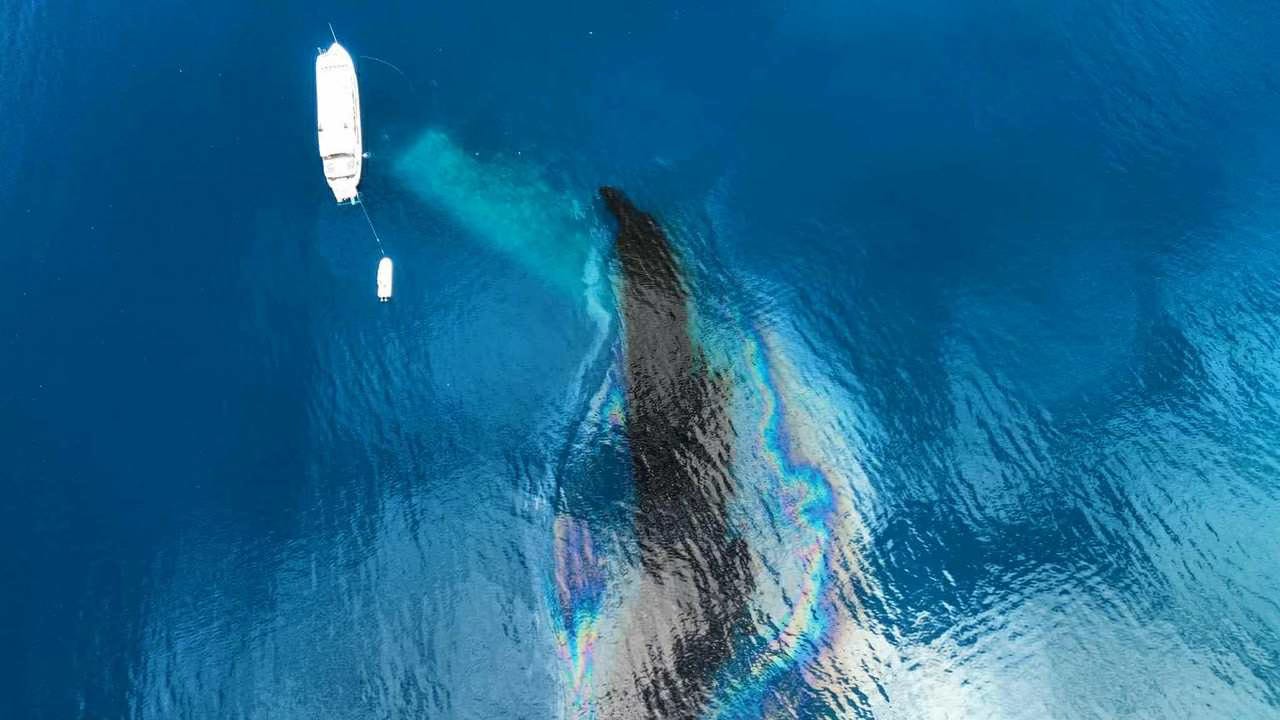On The Wind…
Blue Pacific turning black with wartime oil leak as another drug boat found
After years of warnings, one of the Pacific’s most haunting war legacies has begun to poison its own graveyard. The Rio de Janeiro Maru, a Japanese ship sunk in 1944, is leaking oil into Chuuk Lagoon — a World Heritage site now slick with the ghosts of war and bureaucratic neglect. Meanwhile across the Pacific: another drug-running boat washes up in Malaita, Aotearoa pays up for a naval blunder in Samoa, the Cook Islands duck responsibility for Russia’s “shadow fleet,” and Samoans still panic over harmless snakes.

War oil spilling into vast lagoon
After years of talking about it, the worst is beginning to happen as wartime oil flows into the Pacific’s Chuuk Lagoon, a UNESCO World Heritage.
But for all its status, helpless inaction has followed with no obvious plans to protect the 2,130 square kilometre lagoon, part of the Federated States of Micronesia (FSM).
In this blog:
Another high speed drug boat found in the Solomon Islands.
Aotearoa pays for ship sinking in Sāmoa
Cook Islands told prosecuting Russian shadow tanker their job.
Panic in Sāmoa over harmless snakes.
During World War Two Chuuk - then known as Truk - was one of Imperial Japan’s largest naval bases. It was never invaded by the Allies during the war, but a U.S. Navy air attack, Operation Hailstorm in February 1944 sent at least 63 vessels to the lagoon floor. Little if any salvage work followed and today it is estimated that there is between 11 million and 23 million litres of hazardous oil and fuel in the wrecks.
Leaking part of that toxin now is Rio de Janeiro Maru, a Japanese merchant vessel, requisitioned by the Imperial Japanese Navy in 1940. It served as a submarine tender and transport ship. It lies 15 to 20 metres deep off Uman Island, home to around 2500 people.
The oil leak was first discovered on September 11, 2025, by divers from the liveaboard dive vessel Odyssey. The leak has since formed a sizable slick that has spread over several kilometers, reaching shorelines on nearby islands including Panitiw, Nukanap, and Sopota.
As of early October, the oil continues to wash ashore, turning mangroves black and contaminating coastal areas.
No full containment or major cleanup has been reported yet, and local authorities warn that this could be the “first of many” leaks from the lagoon’s aging wrecks. Photographs posted on the Office of the Governor of Chuuk’s Facebook page show the oil has reached shore.
Keep reading with a 7-day free trial
Subscribe to Michael Field's South Pacific Tides to keep reading this post and get 7 days of free access to the full post archives.


